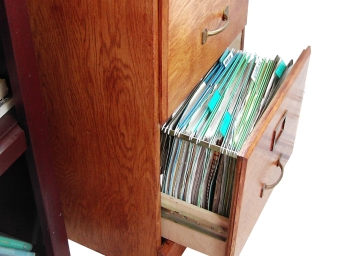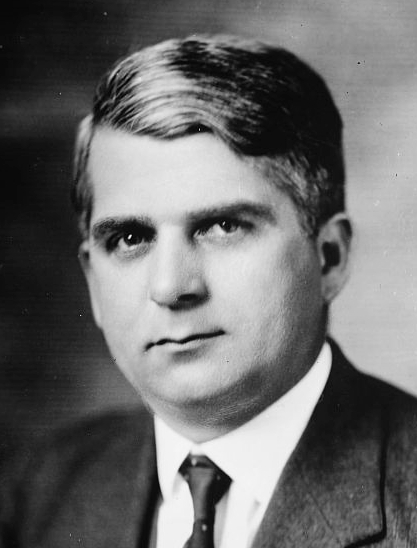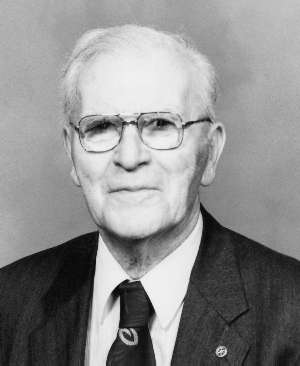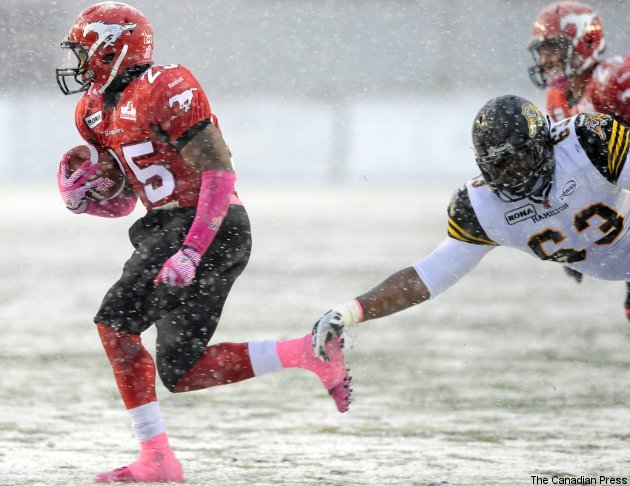https://ift.tt/1aM7iQv
Everyone knows that the Southern United States invented corn fritters, the Dukes of Hazzard, and institutional racism. But they’ve invented other things, too! Important things! So the next time you’re about to make a joke about banjo-pickin’ inbreds, remember that the South gave us…
10. Dental Floss
Flossing, the quickest and easiest way to keep your teeth clean that nobody actually does (don’t deny it, we’re already ashamed of you. We mean, have you even heard about how it helps prevent gum disease and gingivitis — er, sorry. Tangent over, back to article now) has a long and proud southern history. It begins in 1815, when a New Orleans dentist with the awesome name of Levi Spear Parmly recommended that people clean their teeth with silk floss. We hope they left it sticking out of the breast pocket of their jacket like a proper dandy. “I say, your floss looks delightful. Is it made with the finest silks of the Orient?” People probably didn’t ask that, but they should have.
Nothing else interesting happened in the normally thrilling world of floss until the World War II era, when another New Orleanian, Charles C. Bass, developed nylon floss. Nylon was more effective than silk and Bass, a doctor and dean of Tulane who made significant contributions to both dental hygiene and tropical medicine, extensively promoted oral health practices. Before Bass’ innovation and proselytization few people flossed, but thanks in part to his hard work roughly 49% of Americans now floss daily.
Wait, is that all? It takes, like two minutes, you lazy dingwads. Step it the hell up.
9. Cotton Candy Machine
Now that we’ve shown you the South’s contribution to dental hygiene, let’s balance it out with one of their contributions to tooth decay. The South is, after all, famous for its diabetes and heart attack-inducing culinary delights—it would be remiss of us not to include one of their recipes for haute cuisine.
Cotton candy’s been around since the 18th century, but back then it took a lot of work to make. The whole point of junk food is to be eaten by lazy people, so having to work your ass off to make it kind of defeats the purpose.
Thankfully, William Morrison entered the scene to ensure humanity had easy access to a socially acceptable method of stuffing pure sugar in your mouth. Morrison, a Nashville dentist (yep,) teamed up with confectioner John C. Wharton to mechanize the candy-making process, earning a patent in 1899. They sold over 68,000 boxes of the stuff at the 1904 World’s Fair under the whimsical, if slightly wimpy, name “fairy floss.” Morrison went on to become President of the Tennessee State Dental Association, because one thing that hadn’t been invented yet, was irony.
Then in 1921 a dentist from New Orleans named Joseph Lascaux patented his own machine, because Dixie dentists are apparently responsible for 90% of human progress. Lascaux’s invention was functionally similar to Morrison’s, but his name of cotton candy caught on and became the standard we all know and love today. Morrison is also noteworthy for selling his cotton candy right in his office, which represents either a startling lack of dental knowledge or an even more startling understanding of villainy.

“If you don’t want another painful visit to the dentist, don’t each too much sugar. Like the sugar I use to make my delicious cotton candy! Try some, it’s free!”
8. Filing Cabinets
Filing cabinets are one of those everyday things that nobody really thinks of as an invention. Like, they’re just so obvious, right? The ancient Egyptians probably filed their papyrus documents in reed cabinets. But nope—up until 1898 people just stuffed papers in big ol’ envelopes that were in turn stuffed in pigeonholes, like cavemen filing their taxes. Tracking down a paper you put in an envelope three months ago was no easy task, and so filing systems across the country were extremely inefficient. It was anarchy, or at least the boring office work equivalent of it.
Then Edwin G. Seibels of South Carolina came along and was all, “Uh, hey guys, why don’t we do it like this?” (not a direct quote). By heroically inventing the idea of putting paper upright in boxes, and maybe using those little guide card things if you’ve got a lot of paper, Seibels revolutionized the world of filing and gave us a system that’s going to be in use until “filing cabinets” are digital archives we access with the computers implanted in our brains, because physical files had to be burned for fuel after the robots destroyed all other sources of power. Or, you know, something like that.

We don’t like to throw the word “hero” around, but what else do you call the man responsible for this?
Seibels was denied a patent under the logic that he had only invented an idea, not a device. The best the poor guy got was a bronze plaque from the company that made the five boxes he used to build his first cabinet, one of which later made it into what is no doubt the most boring section of the entire Smithsonian Institute. Seibels did go on to be elected to the South Carolina House of Representatives, so we guess he turned out alright. However, he also mused that, had he taken a different approach to his patent, he could have been successful—whether he then cried a single manly tear, bottled it, and filed it under “Regrets” cannot be determined.
7. Turtle Excluder Device
The turtle excluder device, or TED, is easily both the most obscure invention on this list and the one with the best name. Your first thought might have been that it’s a tool for being racist towards turtles, like maybe you want to start a petting zoo but don’t want Leonardo anywhere near it, so you invest in a turtle excluder. Which, wow, way to be heartless, turtle hater.
TEDs exclude turtles in a good way—it prevents them from getting caught in shrimp trawl nets and drowning. This is important because sea turtles are an endangered species, and also turtles being killed is just plain sad.
The first TED, The Georgia Jumper, was developed in the 1970’s by a man with the extremely Southern name of Sinkey Boone, whom we can only assume was from Alabama. Another Southerner, Mississippian Noah J. Saunders, patented his own design in 1988. The basic concept is simple—it’s essentially a trap door that only lets turtle-sized critters through—but they can be clogged with debris or easily tampered with by unscrupulous fishers and so improvements continue to be made today.
TEDs are good for both shrimp fishers (they have more room for shrimp) and turtles (they don’t die), and are, with some exceptions, required by law. But enforcement is difficult and erratic, which leads us to believe another Southerner needs to invent the Turtle Excluder Device Enforcement Device, or TEDED. Somebody from Louisiana or whatever get on that, okay?
6. Whiteout
Texas native Bette Nesmith Graham was bad at typing. This was a problem, because she was a typist. It didn’t help that correcting typos on the typewriters of the day was about as easy as correcting typos on iPhones is today (yes, iPhone, when we undo your “correction” four times in a row it means we want to keep what we wrote). Graham also painted holiday windows at her office, and figured that if painters just paint over their mistakes there’s no reason typists can’t do the same. So in 1951 she made some water based whiteout in her blender, dubbed it Mistake Out and brought it to work.
When coworkers begin requesting Mistake Out for themselves Graham realized she was onto something. She refined her formula and began filling small orders in the evenings and weekends until 1956, when she was fired from her day job after she “made a mistake that she did not manage to correct,” which was accidentally putting her own company’s name on a document. While that sounds like the plot twist of an especially lame Twilight Zone episode, or maybe the origin story of one of Batman’s lesser foes, (Beware the nefarious Ms. Stake! Fired for making a terrible mistake, she gets her revenge by correcting the mistakes of others … with extreme prejudice!) it gave Graham the opportunity and financial necessity to devote herself to her company full time.
“Are you bad at spelling? Are you bad at typing? Do you just plain suck at your job? Then I’ve got just the thing for you!”
So she changed the name to Liquid Paper and ran the business until 1979, when she sold it to Gillette for 47.5 million dollars and royalties. Not bad for an invention designed to disguise her own ineptitude.
Incidentally, while Graham’s accomplishment was impressive, Liquid Paper wasn’t her only major invention. She also helped invent Michael Nesmith, guitarist and songwriter for The Monkees, by giving birth to him.
5. Vinyl
Scientists had known about polyvinyl chloride since 1835, but nobody could find any commercial use for the rigid, brittle material. At least not until 1926, when Alabaman Waldo Semon was all, “Yo, let’s plasticize this bitch! Science!” (We like to think that all scientists talk like Jesse from Breaking Bad.)
We’re too dumb to explain the finer points of the science, but we can explain just how important PVC is. It’s used in everything from pipes and electric cables to fetish costumes, so if you’ve ever enjoyed the services of a well-lit, well-heated BDSM club, then you’ve got Mr. Semon to thank.
Semon earned 116 patents over the course of his 100-year life (but he didn’t invent bubble gum, despite a common legend). His materials have countless commercial and industrial applications—PVC is one of the most used plastics in the world. To the layman, its biggest accomplishment is probably bringing music to the masses in the form of vinyl records, and then decades later bringing music to the smaller masses of pretentious people who think that they’re good for MP3s. It’s the invention that keeps on giving!
4. Artificial Turf
Artificial turf, the fake grass that carpets baseball and football stadiums and prompts the most tedious complaints from purists this side of the designated hitter rule, was developed by a team of North Carolina researchers lead by a man named David Chaney. It was first introduced in the Houston Astrodome because there simply wasn’t enough light for natural grass to grow, or possibly because the Astros are so terrible at baseball that their ineptitude destroys the very ground upon which they tread.

“It will be made a wasteland, parched and desolate before me; the whole land will be laid waste because there is no one who cares.”
To debate the gameplay advantages and disadvantages of artificial turf would require its own article, not to mention a two four and some ribs. But one thing’s for sure: it’s durable and allows sports to be played in areas where grass won’t grow. For example, every stadium in the Canadian Football League uses artificial turf, because North Korea will become a democracy before healthy grass grows in Canada in the middle of November.
Artificial turf has uses outside of sports, too. It can be used in landscaping in areas where water conservation and maintenance costs are concerns, or if you really just want to give your lawn that artificial glow. It’s also immensely useful at airports—rescue vehicles can drive on it without worrying about divots and holes, it keeps animals from living in areas where they could collide with planes and its bright green color serves as a useful visual contrast to runways even in the dead of winter. So up until its invention planes just crashed a lot in the winter, we guess.
3. Gatling Gun
While we’re trying to fight stereotypes on this list, it wouldn’t be the South without some guns. But the South does more just than hunt animals and Yankees lost on vacation—it had a hand in firearm history by being the birthplace of the Gatling gun, the quaint, old-timey steampunk-looking weapon that could shred you to bits in an instant.
Richard Jordan Gatling was a North Carolinian who witnessed the horrors of the American Civil War. Like many inventors of mass death, Gatling had peaceful aspirations—noting that far more soldiers died of disease than combat Gatling reasoned that his gun would give one man the firepower of a hundred and therefore eliminate the need for large armies. Spoilers for history: it didn’t quite work out that way.
Unfortunately, Gatling’s brutal invention has overshadowed his other, more positive contributions to humanity. The gun itself is based on a seed planter he invented, one of several important innovations he brought to the world of agriculture. So, on one hand he helped revolutionize modern farming. On the other hand, his weapon killed countless people in a variety of brutal wars. So … we’ll call it a wash?
2. Video Games
If we asked you to name the first video game ever made you’d probably guess Pong, right? The nerdier amongst you might name Computer Space or, if you really know your stuff, Tennis for Two. But if you want to get technical — and we know you do — the very first video game had the catchy name of Cathode Ray Tube Amusement Device. And it was invented, not by some Japanese businessman or a techie in California, but by a man from the Deep South named Thomas T. Goldsmith, Jr.
Goldsmith was born and educated in South Carolina—he received his bachelors in physics from Furman University before going on to get a doctorate at the elitist Yankee institution of Cornell. He was a pioneer in television technology and a well-respected physics professor, but for our geeky purposes he’s most important for his 1947 invention.
Yes, the first video game was made just two years after Hitler died. Goldsmith and his partner, inspired by World War II radar systems, invented a “game” that makes Pac-Man look like Xenogears. Players use knobs to control a dot that needs to be guided over paper airplanes attached to the screen. If they were successful, and we can’t imagine how they wouldn’t be, a technical trick fuzzed up the dot to simulate an explosion.
It was too expensive to make any more than a few prototypes, although we’d like to think that some video game company bought the rights and is in the midst of developing Cathode Ray Tube Amusement Device II: Vengeance. It’s the sequel your grandpa’s been looking forward to for decades!
Purists argue that Goldsmith’s invention wasn’t really a video game—there’s no programming or computer generated graphics, just electronic signals. We would argue that the purists are nitpicking lame-os, and that the very idea of using technology for gaming purposes was the important part of his idea. Either way it’s an interesting moment in entertainment history that the South can lay claim to. It’s certainly a better claim to fame than being the inspiration for Redneck Rampage.
1. Supermarkets
Clarence Saunders was born in Virginia, but he spent most of his life in the South. It was in Memphis that he founded Piggly Wiggly, which sounds like a petting zoo or maybe some weird sex thing, but was actually the first supermarket.
The supermarket is another one of those inventions that seems like it would have been around forever in some form or another. You walk into a building, take stuff you want off the shelves, and then go pay for it. Simple, right?
But before Piggly Wiggly, stores were a hodgepodge of goods and services. You had to ask clerks to get products for you, and you were never quite sure what store would have what. It was an inefficient and expensive process—Saunders was inspired by witnessing many small grocers go bankrupt.
His invention was groundbreaking—Piggly Wiggly stores were the first to price mark all products, refrigerate produce, standardize layouts across stores, improve sanitary standards, and much more. Other grocers were pretty much forced to copy Saunders’ ideas or go out of business. Piggly Wiggly’s business practices even influenced unrelated industries—Toyota in particular borrowed their inventory strategy. For something with such a silly name, it was a pretty big deal.

Saunders would later go on to invent Keedoozle and found the Clarence Saunders Sole Owner of My Name Stores chain, because he was as brilliant at groceries as he was awful at names.
On a related note it was another Southerner, Okie Sylvan Goldman, who invented the shopping cart. They weren’t successful at first—men found them girly and women thought they were too much like baby buggies—but after hiring models and greeters to use and explain them they eventually caught on, with the patent earning Goldman millions of dollars. The first supermarket to use them, outside of the one Goldman owned? You get two guesses, and they both better rhyme with -iggly.
Did you watch the video for this list? Let us know what you thought if you did. And please subscribe to our YouTube channel.
You can read more from Mark, including the story of how he invented ketchup, at his website.
AMAZING
TRENDS,AMAZING
via Toptenz.net http://www.toptenz.net
May 14, 2018 at 05:42PM
.png)










No comments:
Post a Comment